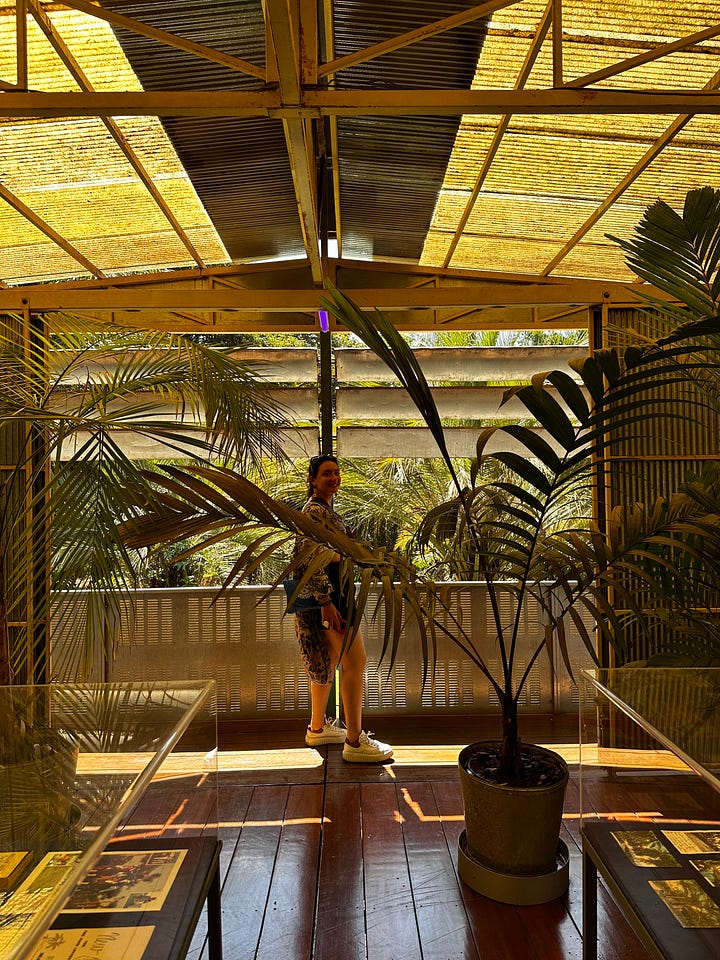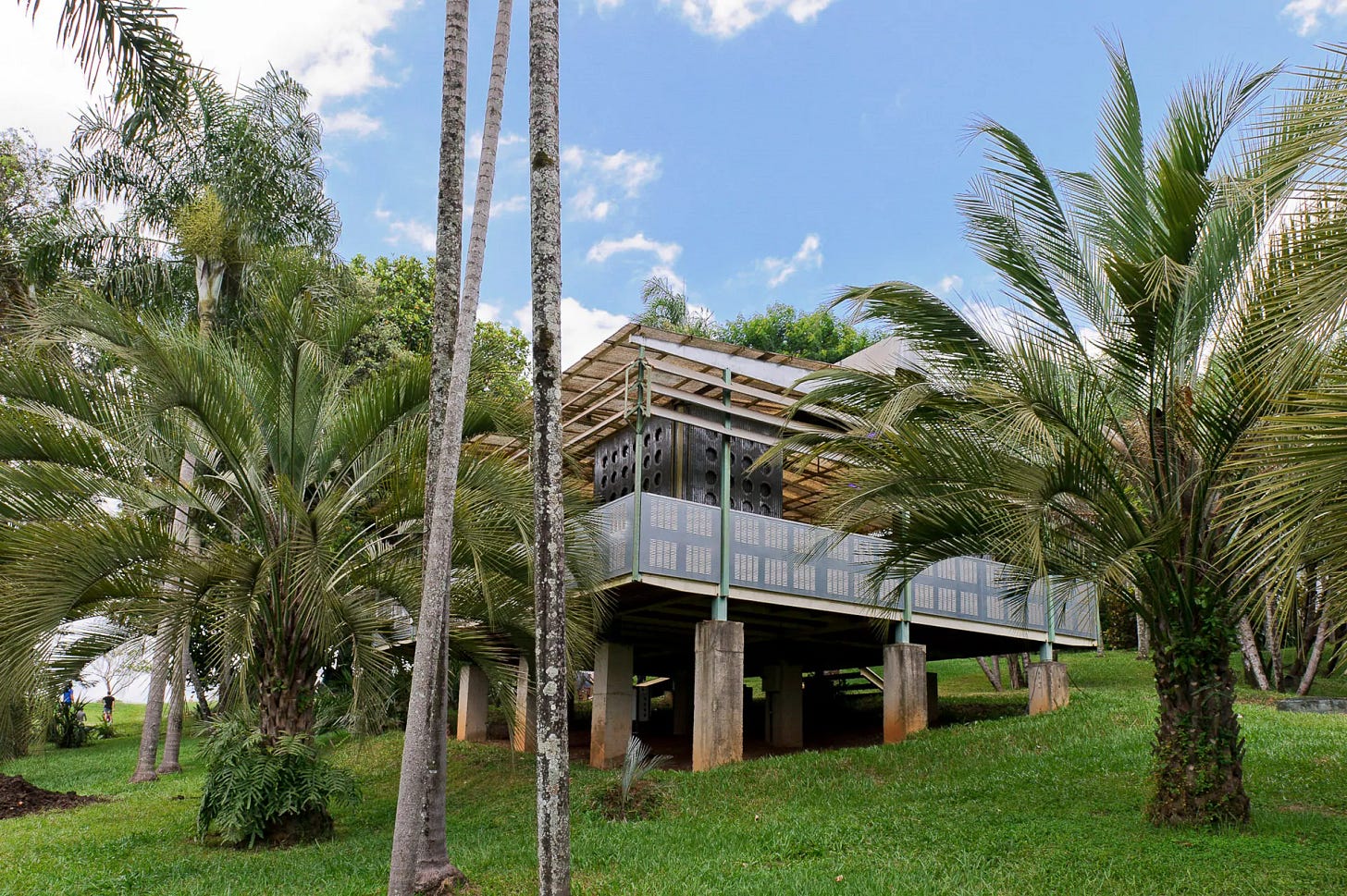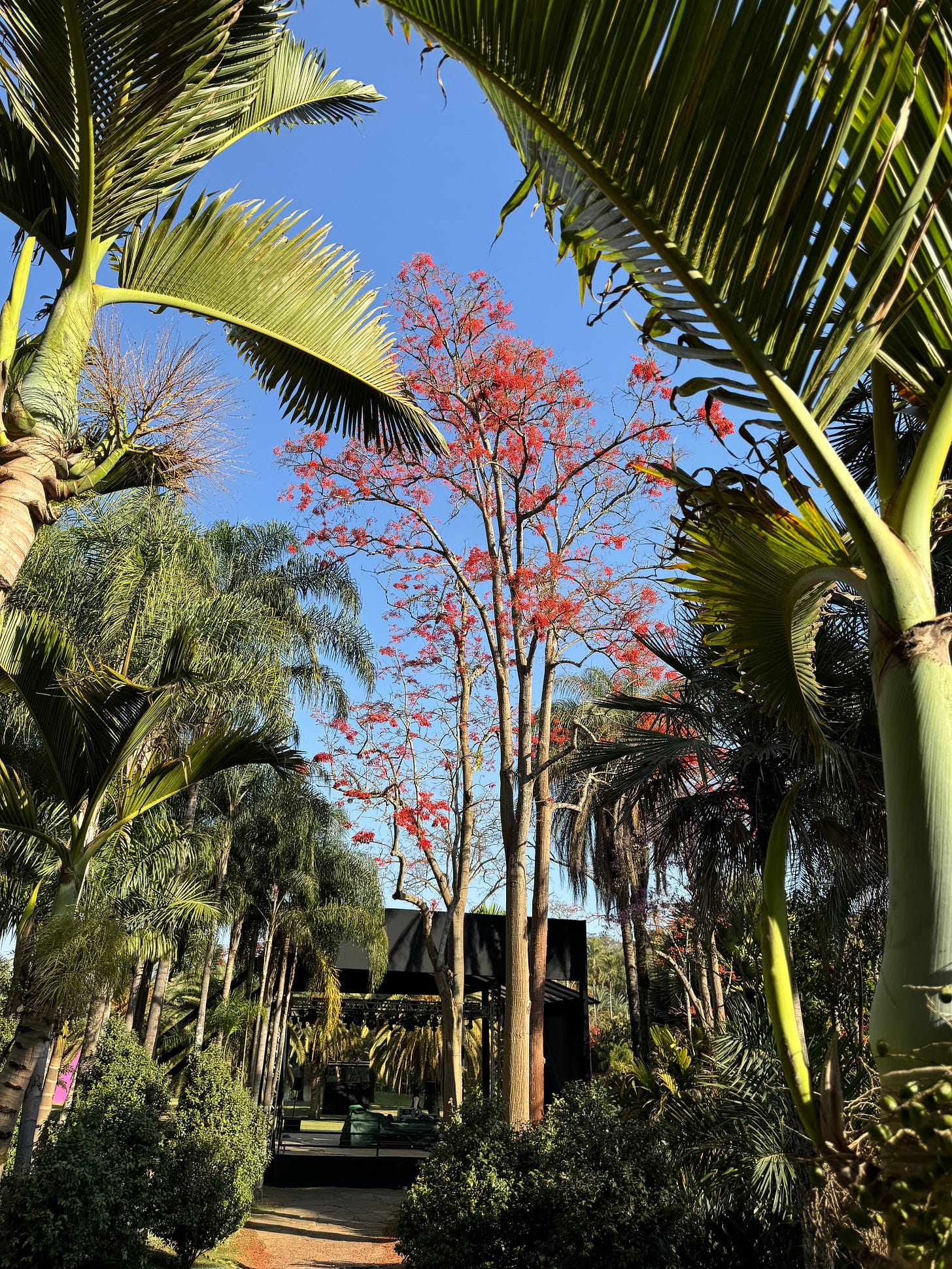Palm Tree: More Than a Symbol Part I
Exploring Rirkrit Tiravanija's Palm Pavilion at Inhotim
I am finally catching up on my writing after a busy month ending my last week of August and early September with my travels to Brazil, including São Paulo, Belo Horizonte, and Burmadinho. It was truly magical and inspiring, especially with all the tropical trees surrounding the cities. For the next two articles, I will focus on the Palm Tree as a symbol, but this part 1 of the series will focus on Thai artist Rirkrit Tiravanija's Palm Pavilion in Inhotim, located in Brumadinho, Brazil, is one of the world's largest open-air contemporary art museums, bridging art, nature, and architecture. It could have been smoother and more accessible to plan to go to Inhotim (1,5 hours away from Belo Horizonte by car), but it is definitely worth a visit. Spanning over 5,000 acres, it houses an extensive collection of sculptures, installations, and pavilions nestled within a lush botanical garden. The museum was founded by Brazilian mining magnate Bernardo Paz in 2006 and has since become a globally recognised destination for art and nature lovers alike.
I found Inhotim unique because it seamlessly integrates contemporary art with the natural environment and surroundings. Unlike conventional museums, artworks are dispersed across gardens, forests, and lakes. The botanical garden itself features over 4,500 plant species from all over the world, making it both a cultural and ecological experience. The museum's art collection includes works from renowned contemporary artists, such as Olafur Eliasson, Yayoi Kusama, Hélio Oiticica, Anish Kapoor, and Rirkrit Tiravanija. I have always been a fan of Rirkrit Tiravanija (b. 1961, Buenos Aires), moving frequently in his youth, primarily to Thailand, Ethiopia, and Canada. Aren't we all migrants, after all? In one way or another, this notion of "belonging" is so vague to me. Anyway, I digress. I will explain the multifaceted references and links in Tiravanija's Palm Pavilion.
The pavilions at Inhotim, which house installations and larger exhibitions, are works of art in themselves, designed by leading architects. Each pavilion is built in harmony with the surrounding landscape. Tiravanija's Palm Pavilion at Inhotim is an installation that embodies the artist's approach to creating spaces for interaction, community, and reflection. In the context of Inhotim's expansive, nature-filled environment, Palm Pavilion plays a crucial role in fostering a contemplative experience while also engaging with the natural world around it. Tiravanija, known for his participatory practice, often focusing on breaking down the barriers between artist, artwork, and audience, reflects this ethos in his pavilion. It's a space where visitors are encouraged to gather, rest, and interact. Architecturally, Palm Pavilion is a minimalist, open structure. It is composed of metal frames supporting a simple roof, under which there are rows of palm trees planted in a grid. The simplicity of the structure contrasts with the lush, organic environment of Inhotim, and this juxtaposition invites visitors to reflect on the relationship between man-made spaces and nature.
The palm trees planted within the pavilion add layers of meaning in this context as they are often associated with tropical climates, growth, and resilience. In the context of Tiravanija's work, they symbolise the organic, natural life that exists in contrast to the rigid structure of modernity and civilisation. In the Palm Pavilion, visitors sit or lie beneath the palms, contemplating the space they occupy physically and existentially. The repetitive grid of palm trees also draws attention to the human tendency to impose order on nature, while still allowing nature to flourish within these constraints. The pavilion itself is intentionally non-intrusive, inviting quiet moments of contemplation. In a place like Inhotim, where visitors are constantly moving between immersive art installations and vast gardens, Tiravanija's Palm Pavilion provides a calm, reflective space. Visitors can stop here to consider the time they spend in this environment and their connection to it.


This work by Tiravanija references Maison Tropicale (1951), a prefabricated house designed by architect Jean Prouvé for French colonies in Africa. The installation contains palm trees, videos, and displays showcasing objects related to the Arecaceae family. While paying homage to this modern architectural icon, Tiravanija's version adds a sociocultural layer by examining the symbolic and scientific significance of the palm tree. Initially created for the 27th São Paulo Bienal (2006), the piece was first installed outdoors at Inhotim, collaborating with the Botanical Garden staff. In Rirkrit Tiravanija's Palm Pavilion at Inhotim, the palm tree is a layered symbol, reflecting historical, cultural, and environmental themes central to his work. Known for addressing globalization, consumerism, and the commodification of everyday life, Tiravanija uses the palm tree—often associated with luxury and tropical paradise—to critique how these environments are marketed and commodified. By placing the palm trees in the pavilion, he challenges visitors to reflect on the contrast between the idealized image of the tropics and their complex histories. The pavilion becomes a space for contemplation, inviting interaction and dialogue, where art and nature merge to explore issues of colonialism, commodification, and nature's resilience.



